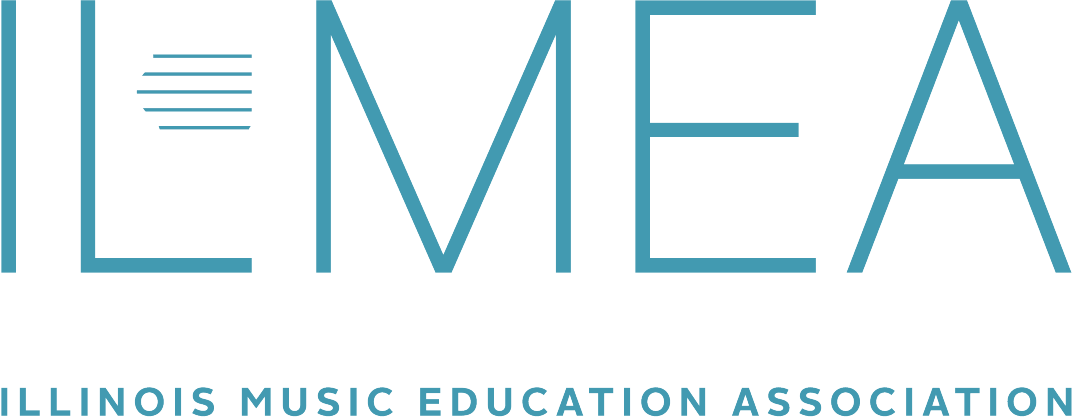The Covid-19 pandemic has affected how we make music with others and teach music to our students. Musicians still want to have group performances, and music teachers want to have some sort of concert experience. In response to stay-at-home restrictions, school closures, and online learning, tech-savvy music teachers across the United States quickly put together virtual performances of their school ensembles. Read on for brief history of the virtual ensemble and general guidelines on how to prepare your students to record for a virtual performance.
This is Music Education: West Chicago School District 33
Connecting with Composers During Remote Learning
When I think back on teaching music remotely… I was happy to be able to provide space for us to be together a few times a week. Musician chats are applicable during in-person instruction as well as e-learning. It is amazing how we can connect our student musicians to the wide world of music without ever leaving our music room or living room!
This is Music Education: Chadwick/Milledgeville Schools
A look into the music program at Chadwick Milledgeville Schools with the choral and general music educator, Scott Mattison. “The most satisfying part of teaching music is the sheer joy of watching students faces when they can bring happiness to their audience through their performance. I want my students to enjoy what they are performing and you can see that on their faces when they sing.”
Let's Do Better: Seeing Color in Music Education
There are no prescribed answers or paths to solving the inequities that exist in music. Methods of curriculum and repertoire are only as effective as the thoughtfulness with which they are crafted and selected, based on the students and communities we serve. So rather than searching for concrete or formulaic answers, let’s choose to engage. Let’s choose to question. Let’s choose to admit our own complicity. Let’s be willing to have uncomfortable conversations. Let’s wrestle with challenging ideas.
Next: Joining Forces with Vulnerability and Courage (My First Few Years of Teaching, Inspired by Brené Brown)
Composing in the JSGM Classroom (And Information For the ILMEA Composition Contest!)
Many educators are considering incorporating topics such as composition that have traditionally been classified as “general music” into their ensemble classes. While this change may initially be approached simply as a way to supplement or replace live rehearsal time, topics like composition, theory, and history can truly enhance learning within any ensemble or general music class.
Resources to Expand Programming and Repertoire
Are you looking to bring works by underrepresented composers into your programming? Are you taking on the work of examining repertoire to make sure the songs in your curriculum are not rooted in damaging or hurtful sources? Whether you teach general music, band, orchestra, chorus or jazz, these are great places to begin that work!
Tapping Invisible Talent, Part 3: Curriculum and Resources
A curriculum of song writing/composing includes music theory elements such as chords, progressions, scales, etc. There is an abundance of resources available to approach these topics in a way that caters to a wealth of teaching styles, and so this article will not dictate to you how to administer those elements. For this article, I will focus on the resources related to learning digital music production and a process for shaping the creative work, and you’ll be able to apply this curriculum to any digital audio software (DAW) you choose.
Tapping Invisible Talent, Part 2: Strategies and Planning to Get Started
After talking about rationale in the first installment (Fall 2019), it is time to get into the nuts and bolts. The world of digital music uses terms and equipment that can sound intimidating. Let’s demystify the jargon, explain what each piece of equipment is used for, and give you ideas on how to build a teaching space for the magic to happen.
Next: Tips on Cultivating a Nurturing Community in Your Classroom
The intrinsic joy that is cultivated through relationship building is a powerful tool that we can use as educators to not only build and retain our programs, but to give our students a sense of belonging. Here are some ideas for ways to make the community in your classroom tangible for your students!
Next: Commitment To Our Students
What do I mean “I am their parent”? As music teachers, if we are fortunate to stay long enough in one school, we have a real chance to build a family. We could see our students for up to nine years in the elementary setting - maybe longer in a K-12 district. We see them year after year, growing and changing.
Tapping Invisible Talent, Part 1: Discovering the Best Student Musicians At Your School You Never Knew Existed
Story & Song: The Negaunee Institute's Songwriting Projects
When Maestro Riccardo Muti became Music Director of the Chicago Symphony Orchestra (CSO) in 2009, he made it clear he wanted his legacy to reach beyond the walls of Orchestra Hall, providing people all over Chicago with access to music.
This is Music Education: Joliet Central High School
Policy Alert - Teach Illinois: Strong Teachers, Strong Classrooms
Earlier this month the Illinois State Board of Education released Teach Illinois: Strong Teachers, Strong Classrooms. The implementation of this publication could have sweeping impact on teacher preparation in Illinois. (The publication is open for public comment until Tuesday, October 2.)
Everything I Needed to Know To Be a Policy Advocate, I Learned in the Music Room
As music teachers, we often say that we teach humans first and music second. In the same spirit, as we approach policy, we need to advocate for policies that not only benefit the music program, but also ensure that students, both in our classrooms and throughout the state, are receiving an education that addresses their needs.
















